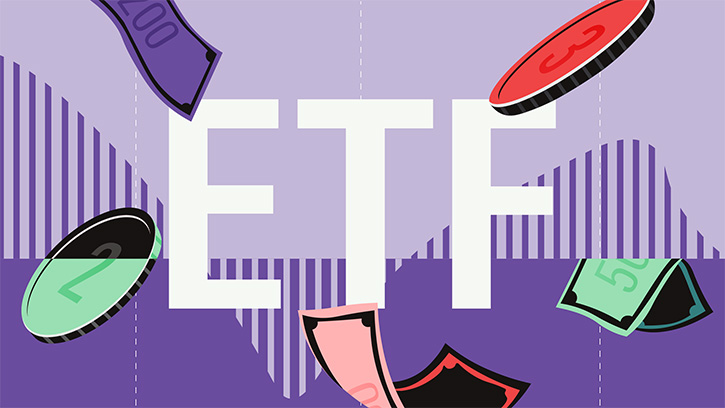“To change one's life, start immediately, do it flamboyantly, no exceptions.”--William James
James, a psychologist, was right on the money with the "immediate" part. But does enacting lasting change in your life need to be momentous or flamboyant? Nah.
Instead, most people who have achieved big goals will tell you they've done so little by little, one small step at a time. The person who lost 30 pounds did so by walking an extra mile a day and putting skimmed milk in her coffee instead of full fat. The author who wrote a best-selling first novel got it done by writing a few pages a night, after he had put his kids to bed.
The same is true when you're aiming to achieve your financial goals. The broad goals of funding a comfortable retirement, paying for education, or buying a first home can seem daunting, particularly when you think through the pound amounts that you'll need to save. But if you break these broad goals down into smaller, more manageable tasks, and tackle them one at a time, you can begin to make real progress toward your goals.
Helping you achieve your financial goals without getting overwhelmed by them was the impetus behind my new book, 30-Minute Money Solutions: A Step-by-Step Guide to Managing Your Finances. The book coaches you on completing 36 separate financial-planning tasks, from creating a budget to crafting a retirement portfolio, each in a half hour or less.
In a similar vein, throughout January on Morningstar.co.uk, we'll coach you on completing one financial-planning task per day, with an eye toward getting in the best financial shape of your life. We'll discuss how to invest for goals that are close at hand, how to build a retirement portfolio, and how to make sure your investments are on track from year to year.
Before you tackle those tasks, however, it's important to lay the proper groundwork: You need to get organised and have a good view of your financial picture. Helping you get there will be the focus of the first week's tips.
Day 1: Start tracking your expenses
Degree of difficulty: Easy
Because most of us are still getting back into the swing of things after the holidays, let's start with a fairly easy task: beginning to track your spending habits. There are Web sites and financial software programs devoted to helping keep close tabs on your household's cash flows, but tracking your expenses can be as simple as jotting them down whenever you find yourself opening your wallet or writing a cheque. Group your expenses into one of two main categories: fixed (i.e., spending that doesn't change and you can't do without) and discretionary. Get a start with this simple PDF worksheet.
Plan to keep track of your expenses for at least a month; that way you can identify patterns in your spending and zero in on your problem spots. Examining cash flows in this way is the first step in creating a budget that aligns with your priorities and the realities of your life. You may also find that tracking your expenditures will have the salutary effect of causing you to think twice before spending money on things you don't necessarily need.
Day 2: Check your credit report
Degree of difficulty: Easy
This week is all about getting organised and finding your financial baselines. One of the best ways to get your arms around your household's financial health is to check your credit report. You can find free, comprehensive credit information at several online credit reporting companies, including major firms Experian and Equifax.
Through their sites, you can obtain data about your credit history and make sure that your credit report doesn't include any mistakes that could harm your ability to obtain credit at a decent rate in the future. You won't be able to see your actual credit score--the agencies still charge for this--but checking these reports is also a good way to ensure that identity thieves haven't obtained credit in your name, or that a black-listed address hasn't affected your history.
I recently obtained my own credit report using Experian and found the site to be straightforward and easy to use. Inputting basic information about myself such as personal details and past addresses, and then answering some security questions, quickly produced by credit report. I last obtained a credit report as a student when an attempt to buy a new latpop on credit was declined. You still had to pay to obtain a report back then--though the charge of £1 hardly broke the bank--and it transpired that an unpaid mobile phone bill in the region of £7 was causing the problem. As I had never had a contract with Vodafone, I knew this to be a mistake and indeed it was removed from my account once I had been able to prove, with the help of the mobile phone company, that I was not, and had never been, a customer.
I can be worth checking your report with more than one credit agency in order to check that they are in sync and up to date with reality, and print each report for further perusal. Watch out for sites that offer a free check for a set period of time, after which they will start charging you. If you opt to use these sites but don't ant to pay then set yourself a reminder to cancel the subscription before the free period is up. If you spot any incorrect information, get in touch with the credit agency directly to discuss amending your report.
Day 3: Set up a bill-paying system
Degree of difficulty: Easy to moderate
If you already have a rock-solid system for paying your bills--perhaps you use your bank's online bill-paying system--you get the day off. (Your degree of difficulty for today? Definitely easy!)
But if your desk is awash in random bills, or worse yet, if you checked your credit report and saw a history of late payments, it's time to put a formal bill-paying system in place.
I'm a big believer in online banking. Not only does it cut down on the amount of paperwork you'll be responsible for shredding or filing once it comes into your house, but reducing your reliance on snail mail also helps lessen your vulnerability to identity theft.
Most financial institutions offer online banking these days, and it's usually free of charge and pretty intuitive to use. Simply head to your bank's Web site for instructions on how to implement such a programme.
Before you opt to bank and pay your bills online, it's essential that your home computing system has up-to-date security protection, including firewalls, antivirus software, and spyware. Also make sure that you've downloaded the latest version of your Web browser, as it will include the most current encryption technology. Finally, take care when selecting passwords. As always, a combination of letters and numbers will help prevent someone from being able to guess at your password. (If you keep a separate document with all of your account numbers, user names, and passwords--and I'll tackle that step on another day--be sure to password-protect it!)
If you don't use an electronic bill-paying system, I'd also recommend logging any incoming bills on to a calendar as soon as you receive them. Plan to post payment of upcoming bills at least seven days before their due dates. Note the date on which the bill should be posted, who you owe, and how much. When you sit down to pay your bills for the coming week or month, this approach will help to ensure that nothing falls through the cracks.
Day 4: Take stock of your assets and liabilities
Degree of difficulty: Moderate
Now that you're getting warmed up, it's time to move on to the key task that will show you how you're doing financially: checking up on your net worth.
If you keep good records and don't have many financial accounts, enumerating your assets and liabilities will be pretty straightforward and shouldn't be time-consuming. You've got more work ahead of you if your records and portfolio are in a state of sprawl, but think of this as your impetus to streamline and get organised.
My book includes step-by-step guidance and a worksheet for tracking your net worth, but you don't need to get especially fancy. To document your assets, simply retrieve your latest account balances and estimate the worth of your personal possessions, including real estate. (Be realistic! Unfortunately, it's probably not worth what it was a few years ago.) On the other side of the ledger, record any debts you owe, including your mortgage; student, home equity, or auto loans; and credit card balances. Subtract your liabilities from your assets and you're looking at your net worth.
If your net worth is negative or barely positive, you've got your work cut out for you. Creating and sticking to a budget should be a key priority in the year ahead. And even if your net worth is comfortably positive, you should still spend time digging into the numbers. Is most of your money tied up in a single asset, such as company equity or your house? If so, a key goal should be to diversify your financial assets in the year ahead. Do you have an adequate amount--six months' worth of living expenses at a minimum--stashed in an emergency fund? If you don't, prioritise building up your position in ultrasafe (and unfortunately, ultra-low-yielding) investments before investing in longer-term assets like stocks.
Day 5: Create a master directory
Degree of difficulty: Easy
"OK, now that's depressing." That was how one of my single friends responded when I suggested that she document all of her financial accounts in case something should happen to her. But the fact is, singletons aren't the only ones who should be documenting their financial assets. And compiling a master directory with essential account information is apt to be just as valuable for you to rely on while you're alive as well as it would be to your loved ones should something to happen to you.
If you've recently completed a net worth statement (Day 4), you've gone through the process of sorting through your various accounts and are in a perfect position to create a master directory. But even if you haven't, creating a straightforward document of your financial accounts shouldn't take long at all.
Your master directory can be either electronic or paper. In it, include financial assets such as bank, fund, and brokerage accounts; company-retirement plan and pension fund details; real estate holdings, and business interests. Alongside or beneath each account name, include account numbers, URLs, passwords, key contacts, and phone numbers. Include similar details for debts you owe and insurance policies.
Given the amount of valuable personal information it includes, your master directory would obviously be manna for identity thieves. So once you've created such a document, it's essential that you take steps to keep it safe. If it's a physical document, keep it under lock and key in your house. If you've created an electronic file, password-protect it using a hard-to-guess password. Then alert a trusted loved one of this document's existence as well as details about how to gain access to it in a pinch.
Plan to keep your document up to date, ideally as part of an annual financial checkup.
Day 6: Update your filing system
Degree of difficulty: Moderate
It's been a freezing weekend across much of the UK--a perfect time to hunker down and tackle some of the items on your at-home to-do list. If organising your home office is one of your goals, start by revisiting what paperwork you're saving. In my experience, most people save way more financial documents than they need to, and they do so out of habit more than anything else. Your shredder is your friend.
To help determine what to save and what to toss, think about which documents would be a true headache to replace if you needed to. (Do you like waiting in line or on hold with government offices? Didn't think so.) Your passport, driving licence, car registrations documents, property deeds, and marriage, birth, death, and divorce documents, as well as the past seven years' worth of tax returns, fit the bill and therefore should either be stored offsite, in a safe-deposit box, or in an at-home fireproof box.
You'll also want to keep a running file at home to hold any documents related to the current year's tax return. For documents that relate to your household's ongoing financial management--including bank and investment statements and monthly bills--ask yourself whether managing those accounts online and retrieving information on an as-needed basis might not be more efficient than stashing all that financial paperwork at home. The answer is probably yes. And as I noted in Day 3's installment, transacting online also courts less identity-theft risk than does allowing personal information to pass through the mail. Before deciding to go paperless, check up on the thoroughness and ease of use of your financial-service providers' online information systems.
As you sort through your paperwork, you're apt to have come up with a big discard pile. I like to play it safe and shred anything with my name and address on it--if it has more personal information than that, such as an account number, put it in the "definitely shred" pile. Among the discard items that can go straight into the recycling bin are annual reports and prospectuses, warranties and manuals for stuff you no longer own, and marketing literature that accompanies bank and investment statements.
Plan to keep your document up to date, ideally as part of an annual financial checkup.
Day 7: Check up on your insurance coverage
Degree of difficulty: Easy
Week 1 has been all about getting organised and finding your financial baselines--checking up on what assets you have now. But how good a job have you done protecting those assets? Use today to check up on the adequacy of your insurance coverage.
It goes without saying that everyone should obtain the best coverage they can afford for real property such as home and autos. But if you're still working, your biggest asset is apt to be your own ability to earn a pay cheque. Therefore, ensuring you're covered in the case of accidents, redundancy, critical illness or death is a must. Your employer may offer some cost-effective coverage but check exactly what you or your family would receive in the case of disability or death and you may find that you need to supplement such cover with your own private policies.
Working people with dependents should also have life insurance, and stay-at-home parents should investigate it, too. Term life insurance is going to be the most cost-effective way to go; if your insurance agent recommends a more permanent type of policy, make sure you thoroughly understand the reasons why he or she finds this type of coverage preferable to a term policy.
One area where the British are guilty of oversight, according to figures from the Bank of England, is mortgage cover in the case of redundancy, disability or death. If you died suddenly, would your partner be able to keep up with mortgage payments on top of paying for your children's education and maintaining the lifestyle to which they've become accustomed?
Finally, it's worth researching personal liability insurance, which covers you in case a third party claims for, e.g., an accident that occurs on your property or a car crash caused by your dog running into the road. If you have contractors, housecleaners or babysitters on your property, or an unruly pet, this is an area well worth looking into. Some pet insurance policies will also cover third party claims as well as the usual vet bills, etc.
When researching such policies, make sure you contact an insurance broker who's regulated by the Financial Services Authority. This will give you a wider range of sources and greater security. You can check out individual companies on the FSA's Web site.























